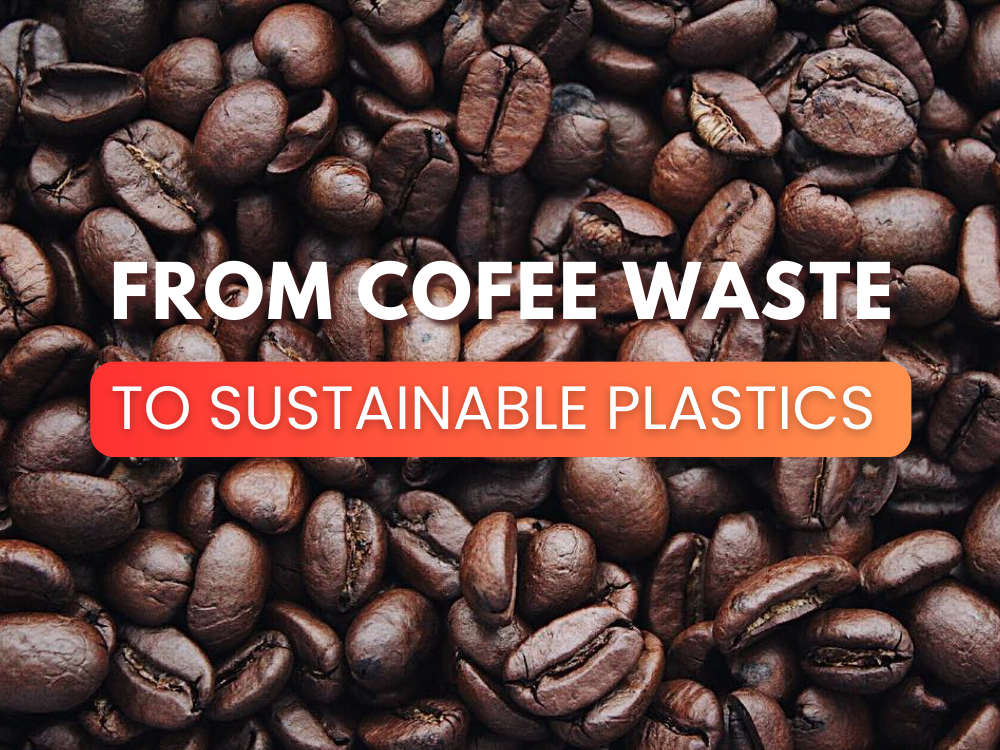
Coffee residues are emerging as a game-changing resource in sustainable plastic production.
By repurposing by-products like spent coffee grounds, coffee husks, and coffee silver skin, manufacturers can reduce waste, minimize environmental impact, and drive innovation in eco-friendly plastics.
What Are Coffee Residues?
Coffee residues are the natural by-products of coffee production and consumption. These materials, including spent coffee grounds, husks, and silver skin, are generated in large volumes. Instead of ending up in landfills, they can be used to produce high-value, sustainable plastic compounds.
Key Benefits of Using Coffee Residues in Plastics
- Sustainability: Integrating coffee residues into plastic production creates a closed-loop system. This circular approach minimizes waste and promotes the sustainable use of natural resources.
- Carbon Footprint Reduction: Combining organic coffee residues with recycled materials reduces reliance on virgin plastics, leading to lower greenhouse gas emissions and a smaller carbon footprint.
- Unique Aesthetic Appeal: Plastics enhanced with coffee residues offer a natural, rustic look. Their inherent color variations and textures provide an attractive, premium finish that appeals to eco-conscious and design-driven markets.
- Waste Reduction: Utilizing coffee residues transforms what would be environmental waste into valuable components for sustainable products, contributing to reduced landfill accumulation and pollution.

Production Challenges and Solutions
While the integration of natural organic materials into plastics is innovative, it does present several challenges:
- Material Compatibility: Ensuring that organic residues bond effectively with different polymers is essential. Specific modifications are often needed to overcome varying chemical and physical properties.
- Processing Stability: Organic residues can contain moisture and volatile compounds, which may interfere with melting and molding processes. Advanced treatment methods are required to maintain consistency and quality.
- Mechanical Properties: Incorporating natural fibers may impact tensile strength and impact resistance. Balancing biodegradability with durability is key to creating cost-effective and functional products.
Innovative Solutions by Plastika Kritis & Global Colors
After extensive research and trials, Plastika Kritis has launched a range of compounds that incorporate coffee residues at various addition rates to achieve desired effects:
- Brown PP 71984:
Based on a PP homo carrier and infused with specially treated espresso coffee scraps, this compound creates a medium brown hue. It is ideal for injection molding applications, including recycling bins, and can be used at up to 100% addition rate.
- Other Polypropylene-based compounds:
- Brown PP 71964: Similar to PP 71984 but without added pigments, offering more flexibility for end-use applications.
- Brown PP 71963: Same as PP 71694 but with PP copo as carrier
Additionally, promising trials with HDPE, PS-GP, PET, and LLDPE indicate that the technology could be extended to other polymers. The insights gained also pave the way for incorporating alternative natural materials such as rice husks, wood fibers, sea grass, and coconut shells into sustainable plastic solutions.

Photo showing a “coffee bin”, manufactured under the principles of circular economy, using our compounds with actual coffee residues
The Future of Sustainable Plastics
By addressing the challenges of material compatibility, processing stability, and mechanical performance, coffee residues and other organic by-products are set to redefine plastic production. This innovative approach not only supports environmental goals but also opens new avenues for eco-friendly consumer goods and luxury packaging. As research continues, the potential to create versatile, sustainable materials is limitless.
Conclusion
The integration of coffee residues into plastic production represents a significant leap toward a greener, more sustainable future. By converting waste into valuable resources, the industry is forging a path to a circular economy that benefits both the environment and the market. Contact us to explore more about adopting eco-friendly materials and innovative solutions into your plastic production processes.
